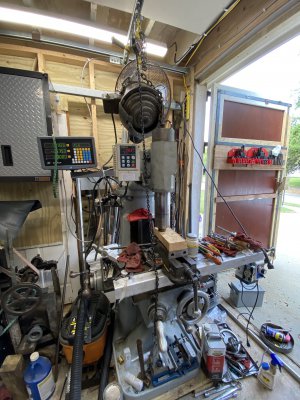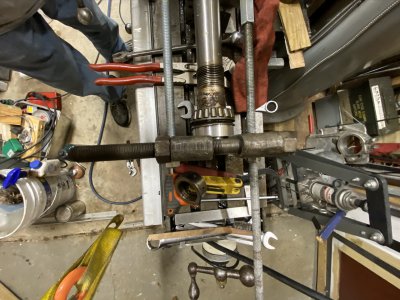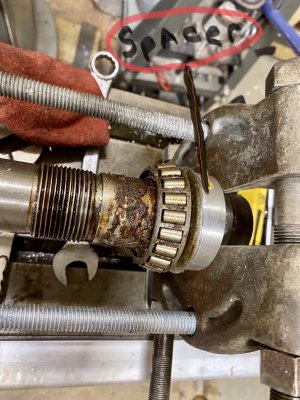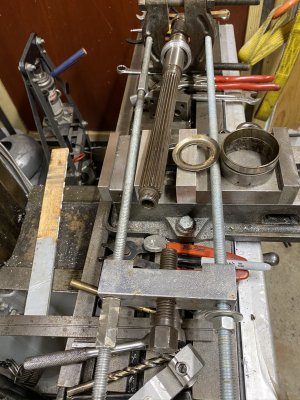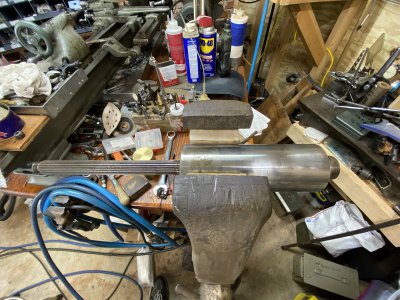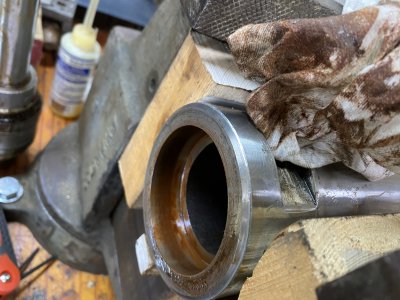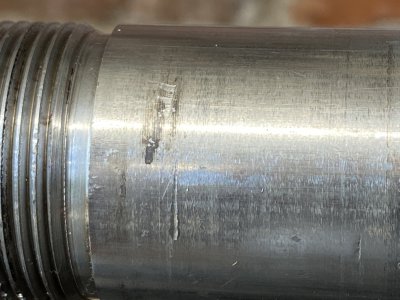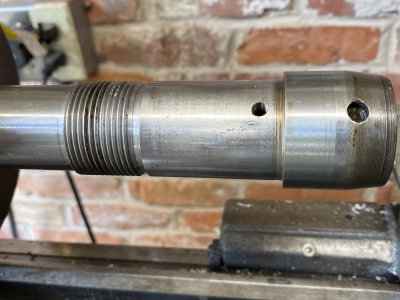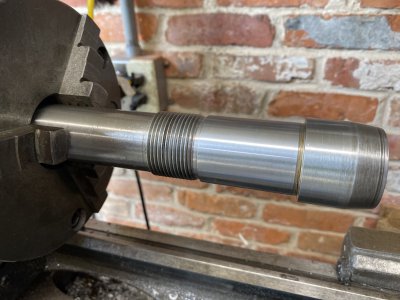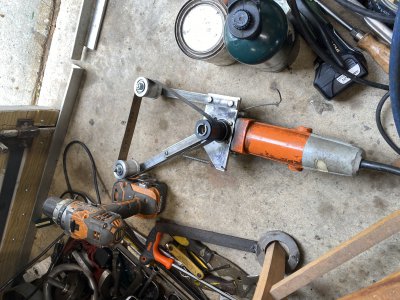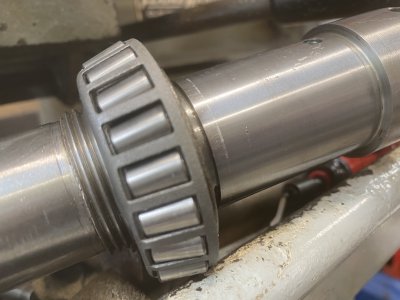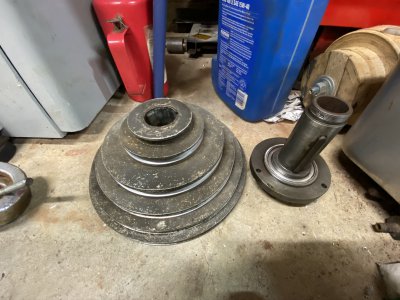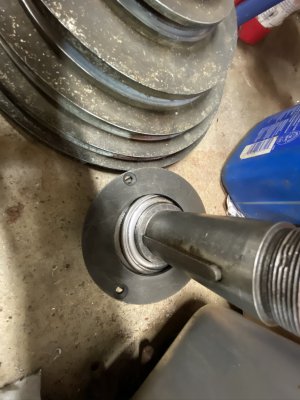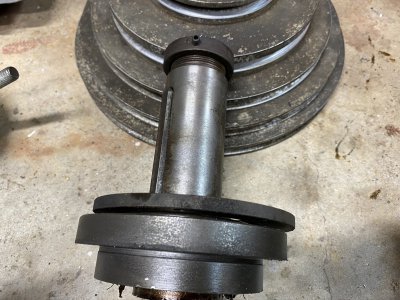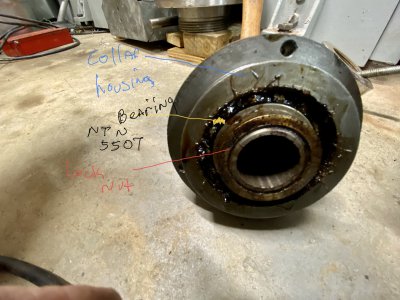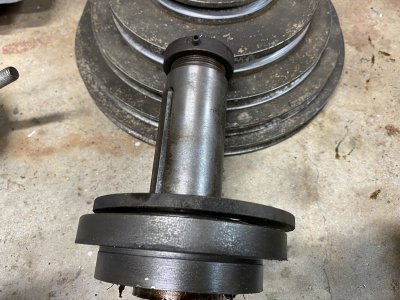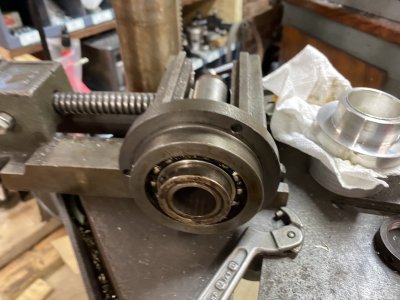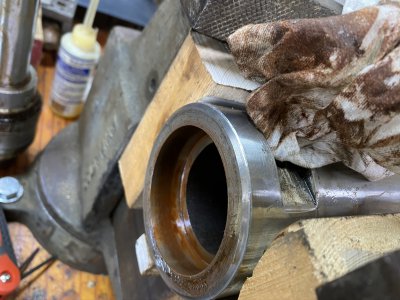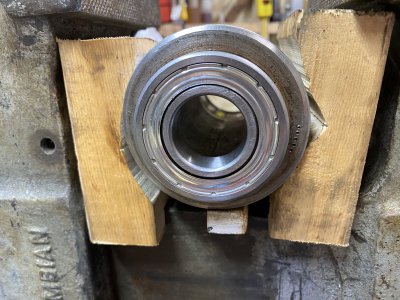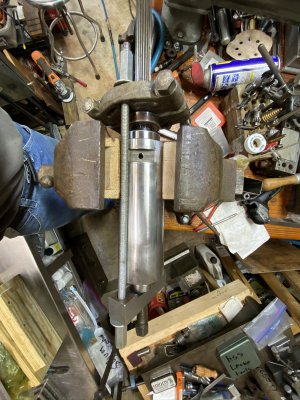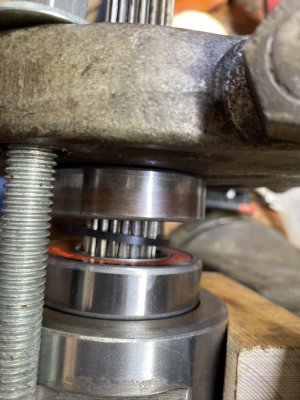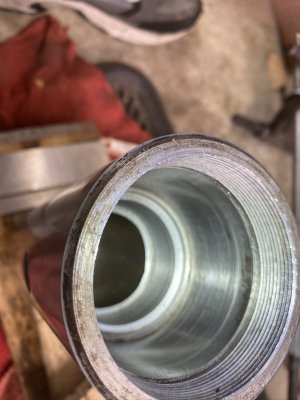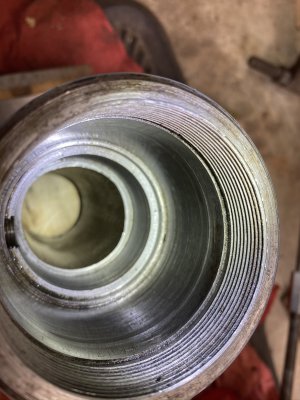Here we go again. Another project which totally sidetracked me. I had my mind set to do some anodizing and nickel plating .
Anyway, I was using the mill the other day and noticed that the lower part of spindle was warm after using the mill for a small job. So I decided to disassemble the spindle and clean and reinstall the bearings. At least that was the plan. I was hoping it was just dried grease with still good precision bearing. I had read another thread where that was the outcome of another Millrite. And FWIW, I was hoping all of these things will fix my spindle which isn’t running very true. I believe last time I checked it... it was out of round about 2 thousandths.
After reading numerous threads on this job, I figured I’d need to make a spanner wrench for the lower spindle cap which is left hand threads. From tips in other posts, the trick is to use a threaded stud in a 1/2” collet ... and with a big washer and nut, that holds the spanner wrench in the cap so it doesn’t slip. I don’t think I saw a single post of where the lower nut/cap came out easily.
Here’s a couple of pics of the spanner I made. 2 steel plates 1/4” thick with dowel pressed into both plates. The plates are set 1/4” apart with the 1/4 x 1” handle welded between them.
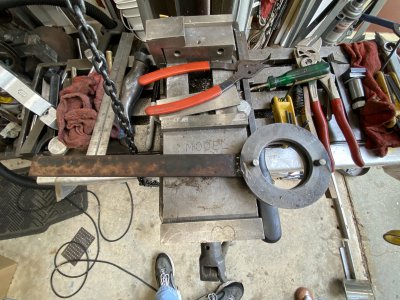
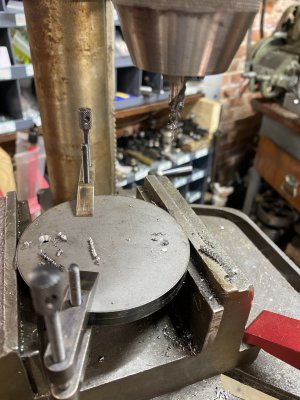
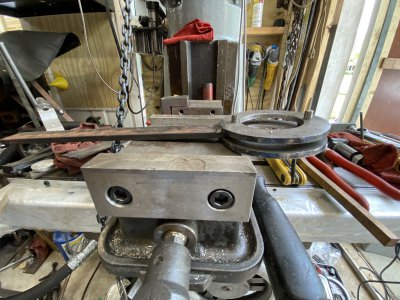
Anyway, I was using the mill the other day and noticed that the lower part of spindle was warm after using the mill for a small job. So I decided to disassemble the spindle and clean and reinstall the bearings. At least that was the plan. I was hoping it was just dried grease with still good precision bearing. I had read another thread where that was the outcome of another Millrite. And FWIW, I was hoping all of these things will fix my spindle which isn’t running very true. I believe last time I checked it... it was out of round about 2 thousandths.
After reading numerous threads on this job, I figured I’d need to make a spanner wrench for the lower spindle cap which is left hand threads. From tips in other posts, the trick is to use a threaded stud in a 1/2” collet ... and with a big washer and nut, that holds the spanner wrench in the cap so it doesn’t slip. I don’t think I saw a single post of where the lower nut/cap came out easily.
Here’s a couple of pics of the spanner I made. 2 steel plates 1/4” thick with dowel pressed into both plates. The plates are set 1/4” apart with the 1/4 x 1” handle welded between them.



Last edited:


